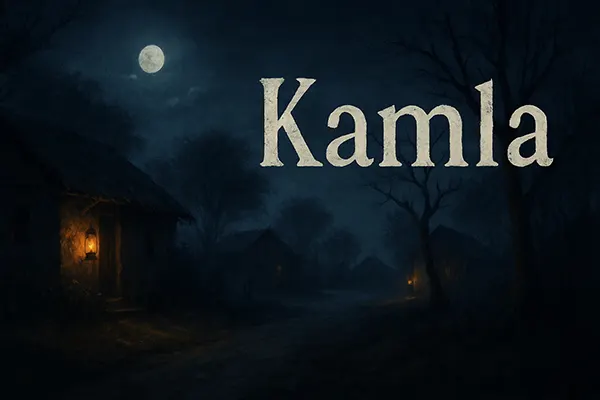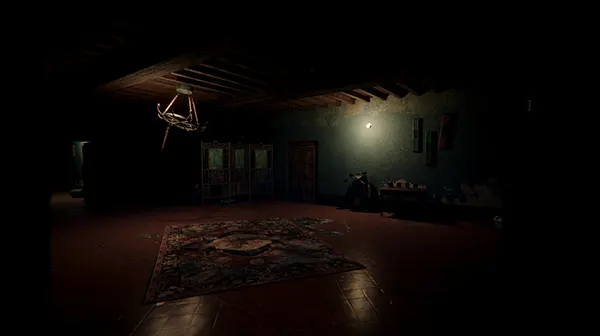
Indie Horror Redefined: Kamla Mobile Game Review (2025)
Mobile horror games have come a long way, and Kamla — a haunting indie title for Android and iOS — is one of the best examples of how a compact experience can still deliver a strong emotional impact. Developed by DesiGame Studio, Kamla immerses players in an unsettling rural Indian setting, blending folklore and psychological suspense. This article explores Kamla from all angles — gameplay, visual design, and its unique place in the genre — based on the current 2025 version.
Atmosphere and Narrative Depth
Kamla sets itself apart through its atmospheric storytelling. Rather than relying on jump scares or graphic violence, it builds dread slowly, using environmental storytelling and cultural references rooted in Indian myth and superstition. The story unfolds in a remote village where strange disappearances and supernatural whispers hint at a tragic past.
The protagonist, a curious outsider, investigates the fate of a missing girl named Kamla. Through environmental cues, journal entries, and chilling encounters, the player pieces together the dark story. It’s a carefully crafted experience that rewards exploration and attention to detail.
Each scene contributes meaningfully to the mystery, with subtle visual hints and sound cues guiding the player without overt exposition. It’s this subtle approach that lends the game its psychological weight — it doesn’t tell you what to feel, it shows you.
Sound Design and Emotional Engagement
The game’s audio landscape plays a crucial role in crafting unease. Creaking doors, whispers in the distance, and traditional Indian instruments create a chilling yet culturally immersive atmosphere. The minimalist soundtrack intensifies suspense without overwhelming the narrative.
Voiceovers, when used, are delivered in a natural, conversational tone in Hindi with English subtitles, which adds authenticity and local flavour. This linguistic grounding makes the horror feel real and immediate.
Importantly, sound cues are dynamic — footsteps change with surface textures, and distant screams subtly evolve depending on the player’s progression, keeping the experience fresh and deeply personal.
Gameplay Mechanics and Mobile Optimisation
Kamla features a first-person exploration format with simple touch-based navigation, allowing players to move, interact with objects, and solve puzzles without clunky menus or forced tutorials. The mechanics are streamlined for mobile, yet still immersive.
Inventory is minimal, encouraging players to focus more on investigation than item hoarding. Clues are usually tied to specific locations and objects, reinforcing the importance of environment over action. There are no combat elements, which keeps tension psychological rather than physical.
Performance-wise, Kamla is optimised for mid-range smartphones. As of June 2025, it runs smoothly on Android 11+ and iOS 15+ devices, with low battery consumption and quick load times, even on older models.
User Interface and Accessibility
The game’s interface is clean and intuitive. There are no intrusive HUD elements — only a small icon for interaction and a context-sensitive menu. This supports immersion by minimising distractions during gameplay.
Kamla includes subtitle options, brightness calibration, and adjustable text size. These small but important features make the game more accessible to players with visual or hearing limitations. Additionally, the control sensitivity can be adjusted for left-handed users.
Save points are generous, with automatic saves triggered at critical moments. Players can also use manual checkpoints, allowing for flexible session lengths — a crucial feature for mobile gaming audiences.

Visual Style and Artistic Direction
Visually, Kamla doesn’t aim for hyperrealism — instead, it uses stylised graphics with a muted colour palette and hand-drawn textures. This choice enhances the game’s dreamlike, unsettling mood, while also reducing hardware strain.
The lighting system is one of the highlights. Dynamic shadows, flickering lamps, and fog effects simulate tension masterfully. Night-time scenes are particularly effective, often illuminated only by candlelight or phone flash, amplifying a sense of isolation.
Environmental design pays attention to cultural specifics — hand-painted symbols, village shrines, and rural architecture feel authentic. The result is a setting that feels lived-in and culturally grounded, not generic.
Replay Value and Future Potential
Though relatively short — roughly 90 to 120 minutes — Kamla offers replay value through branching narrative paths and hidden lore items. Players who revisit the game with a keener eye can uncover alternative endings and more nuanced story elements.
DesiGame Studio has hinted at additional content, including a prequel DLC focusing on Kamla’s childhood and an interactive diary mode, which would allow players to reflect on choices made during the story.
Critically, the game has already been praised in 2025 by Indian indie communities and global reviewers for bringing attention to South Asian horror storytelling. Its continued success may well inspire similar titles in the near future.
-
 Delta Force (2025) on Android / iOS — A New Standard of Mobile Shoo...
Delta Force (2025) on Android / iOS — A New Standard of Mobile Shoo...In 2025, mobile shooters continue to dominate app stores, with …
-
 Call of Duty: Mobile – The Ultimate Mobile Gaming Experience
Call of Duty: Mobile – The Ultimate Mobile Gaming ExperienceCall of Duty: Mobile is a revolutionary entry in the …
-
 Casino Simulators: The Rise of Grand Casino Tycoon
Casino Simulators: The Rise of Grand Casino TycoonIn today’s digital age, gaming enthusiasts don’t just want to …
